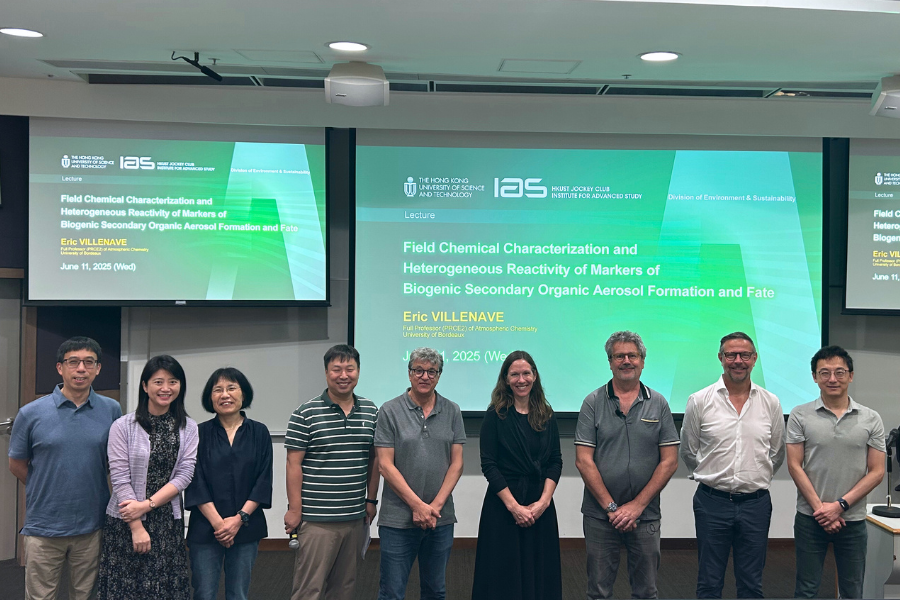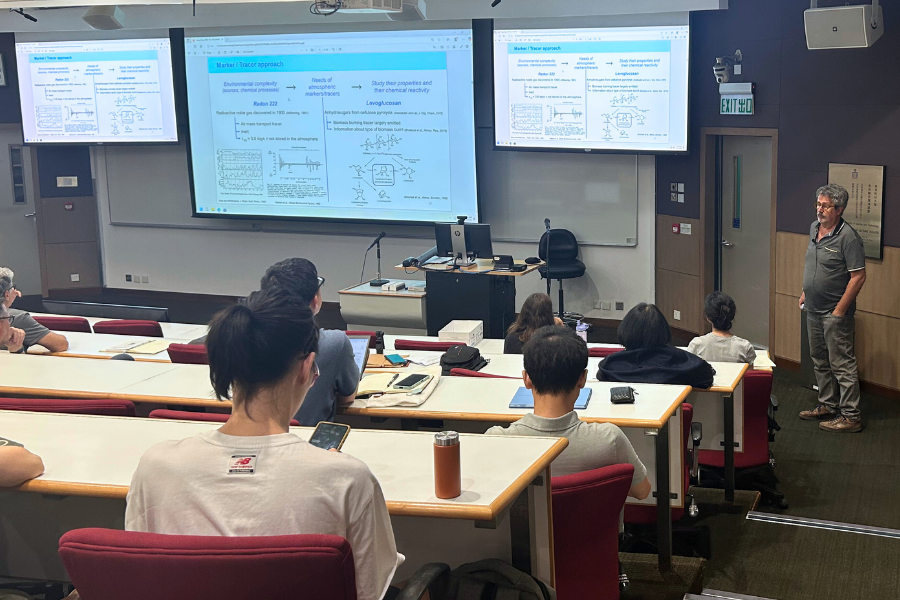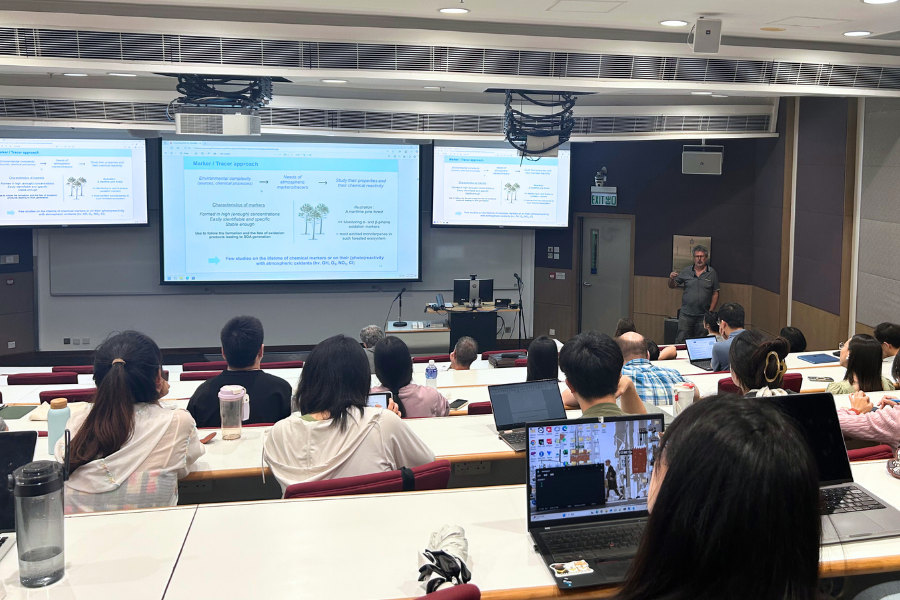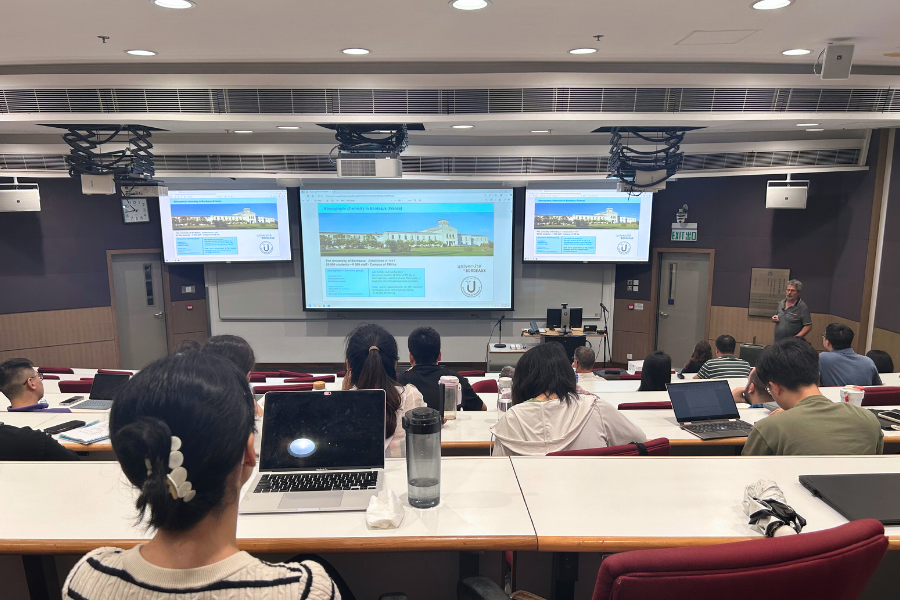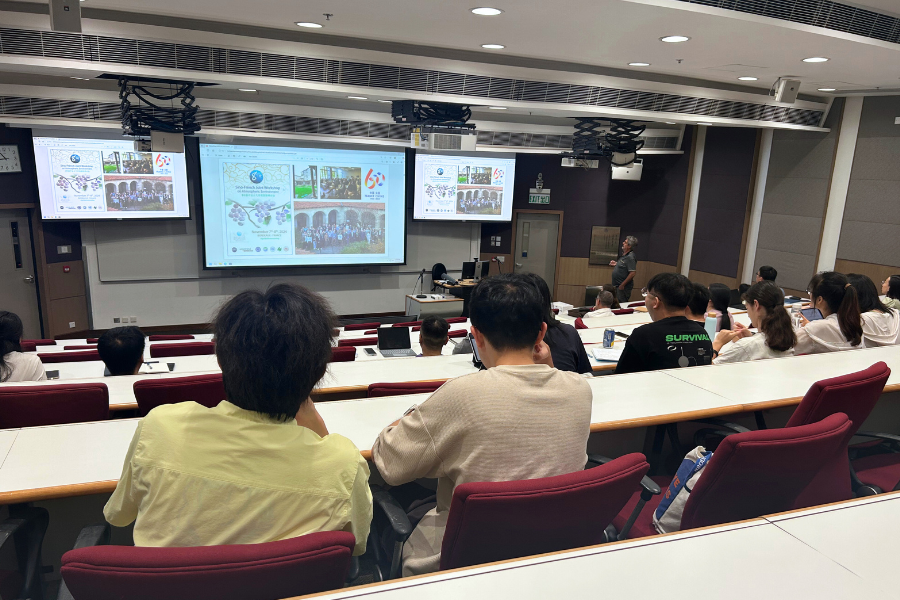Field Chemical Characterization and Heterogeneous Reactivity of Markers of Biogenic Secondary Organic Aerosol Formation and Fate
Abstract
Secondary aerosols, whose emissions cannot be regulated, have been the subject of all attention for several years due to their impacts on both climate change and air quality. In this context, the LANDes EXperiment project (LANDEX) focused on the study of biosphere-atmosphere interactions at Salles-Bilos in the Landes forest ecosystem, established as an open-air laboratory. Indeed, this managed-forest is planted almost exclusively with maritime pines, resulting in specific high monoterpene (mostly α- and β-pinene) and poor isoprene emissions. The aim of the LANDEX project was to study the formation and fate of biogenic secondary organic aerosols (BSOAs). In-situ photo-oxidation gas-phase processes involving biogenic volatile organic compounds were reported by MERMET et al. (2021). Such multi-oxidation steps are well-known to lead to the formation of secondary aerosols, that may be subject to different ageing processes during their transport.
In this work, the chemical composition of atmospheric particles was investigated using liquid chromatography coupled with a time-of-flight mass spectrometer (LC-QTOF/MS) to achieve a molecular speciation of major BSOA markers. Their concentrations were determined in the PM2.5 and PM1 fractions for day- and nighttime periods along with the on-line measurements of VOCs (mainly terpenoids), either directly emitted by vegetation or generated through first or second generation oxidation steps (e.g. pinonaldehyde and nopinone).
The complexity of the chemical composition of SOAs, the difficulty to characterize and evaluate their sources and subsequent aging processes, combined with the importance of SOA in terms of impacts, make the need to use reliable atmospheric markers. During air mass transport, markers may undergo (photo-)chemical degradation in either gas or liquid phase but also heterogeneous oxidation. These last processes have been poorly or not all documented for BSOA markers. Therefore, gas-surface reactions of 6 particulate-products arising from the oxidation of monoterpenes (α- and β-pinene, β-caryophyllene) respectively terebic acid, terpenylic acid, pinonic acid, pinic acid, 3-methyl-1,2,3-butanetricarboxylic acid (MBTCA) and β-caryophyllinic acid, with some of the main atmospheric oxidants (hv, OH, O3, NOx) were investigated. The results will be presented and discussed through an illustration in the framework of a forest ecosystem.
About the Speaker
Prof. Eric VILLENAVE received his PhD in Chemical Physics and his Habilitation HDR, both from the University of Bordeaux (UB), in 1996 and 2003 respectively. He is currently a Full Professor (PRCE2) of Atmospheric Chemistry in the Department of Continental and Oceanic Environments and Paleoenvironments at UB.
Prof. Villenave’s research mainly focuses on the study of the formation and fate of atmospheric pollutants, including laboratory reactivity, kinetics, photochemistry, gas-surface reactions, and source apportionment of primary and secondary aerosols. He has authored over 100 publications and has presented his work at numerous national and international conferences, contributing significantly to the understanding of atmospheric processes.
Prof. Villenave has been elected as Member of the National Centre for Scientific Research (CNRS) National Committee and the Scientific Advisory Board of OBS4CLIM (Integrated Atmosphere Observation System). He was the Chair of the LEFE-CHAT (French National Program in Atmospheric Chemistry) Steering Committee in 2018-2023.
For Attendees' Attention
Seating is on a first come, first served basis.

